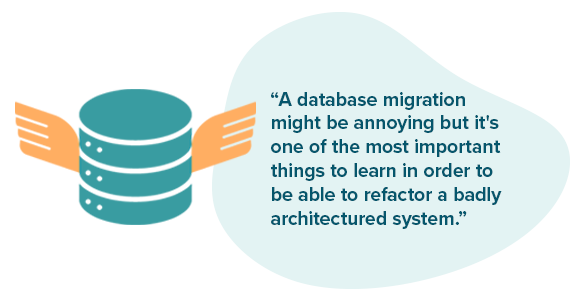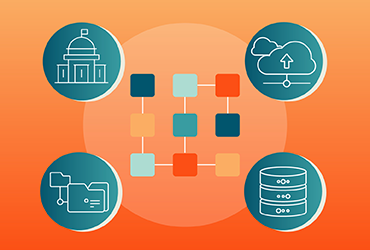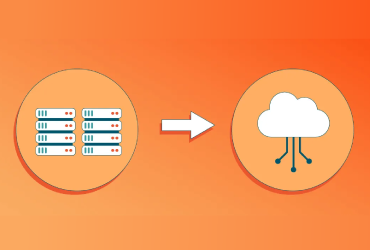Database Migration Resource Hub
Facing a database migration? We've got the tools and insights you need. Scroll down for best practices and expert guidance to ensure a smooth migration.
Need more assistance?

Migration Tools & Techniques

Poor Database Performance Post-Migration
Discover the essential steps to optimize performance after database migration, from addressing configuration mismatches to iterative query tuning and...
Watch

Backups and Recovery
Learn key strategies for selecting and managing backup solutions during database migrations, balancing control between backup admins and DBAs for opt...
Watch

3 Considerations for the Assessment Phase of a Database Migration
Understand the critical pre-migration steps: defining processes, assembling the right team, and leveraging data modeling to evaluate data quality, ow...
Watch

Top 3 Considerations for a Successful Migration
Prioritize thorough planning, comprehensive data modeling, and rigorous testing to anticipate and mitigate migration challenges, ensuring a smooth an...
Watch

Migration Project Plan - Risks
Explore key risks in database migrations, from data loss and performance degradation to security vulnerabilities and user adaptation challenges, and ...
Watch

Rollback Paths Mid-Migration
Explore the importance of real-time replication and rollback strategies during database migrations, ensuring data integrity and minimizing downtime r...
Watch

Database Migration Performance Monitoring Tools: What to look for
Explore key criteria for performance monitoring during database migrations, including baseline comparisons, bottleneck identification, resource track...
Watch

Leveraging DBA IDEs for Complex Migrations
Discover how utilizing integrated tools and IDEs across both source and target environments can simplify complex database migrations, improving produ...
Watch

erwin Data Modeler for Database Migrations
Leverage Erwin Data Modeler for database migrations, from logical modeling to ensuring data integrity, performance optimization, and compliance in th...
Watch
De-risking Database Migrations

5 Database Migration Traps to Avoid
Explore five common pitfalls that can derail database migrations.
White Paper

Cloud migration best practices: Success factors and pitfalls to avoid
Learn strategies from cloud experts on how to perform cloud migrations without downtime, optimize costs and performance, reduce complexity, and ensur...
Watch

Mastering Database Migrations: Building Resilience in a Data-Driven World
Explore expert strategies for successful database migrations. Learn how proactive planning, governance, and the right tools can reduce risks, ensure ...
White Paper
Data Governance in Database Migrations

Maintaining Data Integrity During a Migration
Delve into techniques for maintaining data integrity and validation rules during migrations, essential for sustaining data accuracy and consistency.
Video

Design Lineage, Data Lineage, Semantic Lineage During a Migration
Explore the crucial role of data lineage in database migrations, ensuring data integrity and traceability from source to destination.
Watch

Discovered Data Quality Issues During a Migration
Address critical data quality issues uncovered during migrations, emphasizing the importance of clean data for successful system transitions.
Watch

Data Quality - Pre-Migration
Delve into the integration of data modeling with data quality remediation, ensuring a successful transition to new database platforms.
Watch

Data Product Integrity Mid-Migration
Explore strategic methods to ensure the integrity of data products through meticulous impact analysis and data modeling during system migrations.
Watch

Safeguarding Sensitive Data, Pre, Mid, and Post-Migration
Discover strategies for handling sensitive data during migrations, ensuring compliance and safeguarding data through meticulous documentation and mod...
Watch
Data Modeling in Database Migrations

Retargeting: Forward/Reverse Engineering
Learn how forward and reverse engineering enable effective database migration, ensuring data integrity and optimizing system performance across platf...
Watch

erwin Data Modeler for Database Migrations
Leverage Erwin Data Modeler for database migrations, from logical modeling to ensuring data integrity, performance optimization, and compliance in th...
Watch

How to Modernize Your Databases With Data Modeling
Learn how data modeling enhances database modernization, improves efficiency, reduces errors, and supports real-time analytics.
White Paper
Why Migrate

What is data migration?
Explore the differences across data migration types, from storage and database migrations to cloud and business process migrations. Learn key strateg...
Read

Risks of Not Migrating
Explore the critical risks of not migrating, from security vulnerabilities to missed technological advancements, and why updates are essential for da...
Watch

Why Migrate: Common Triggers for Database Migration
Uncover key drivers for database migration programs, from enhancing performance to managing licensing costs and security upgrades crucial for every d...
Watch

Benefits of Database Migrations
Discover the multifaceted benefits of database migration, from improved data quality and performance to enhanced scalability and access to new techno...
Watch

First Time? Consider "The Business" side
Learn how effective database migrations forge stronger business-IT relationships, focusing on strategic collaboration and aligned goals.
Watch

Making The Right Move: Databases In The Cloud
Explore key strategies for migrating databases to the cloud, addressing common challenges like cost, complexity, and security. Learn best practices f...
White Paper
FAQ
To reduce complexity, it’s recommended that DDL and application code changes be suspended for at least the duration of the final “production” migration. Any changes that must be made should be tightly controlled and scheduled so as not to interfere with replication or other migration steps.
Automate schema changes with version control and integrate migration scripts into your CI/CD pipeline. Test continuously in a staging environment and ensure regular database backups for easy rollback.
Use data validation checks, data profiling, and a data modeling tool to ensure data integrity. Compare checksums between source and target and run tests post-migration to confirm accuracy.
Review stored procedures and triggers for platform-specific differences. Test them on the target DBMS to ensure functionality, and optimize any outdated code for better performance. Be aware that platform changes may have large performance impacts.
Identify differences early, convert character sets with tools or scripts, and
run tests to ensure compatibility. Special attention to encoding helps avoid
data corruption.
Use phased migrations, real-time replication, or blue-green deployments to
reduce downtime. Sync data continuously and switch over during off-peak hours.
Use APM tools to monitor performance, optimize query execution, and adjust
configurations like memory allocation and indexing based on real-time data.
Encrypt sensitive data during migration and ensure strong access controls. Outside of the data migration initiative, all sensitive information should be reviewed and both data masking & data encryption strategies applied where necessary. Additionally, regularly audit user permissions to maintain security.
Avoid insufficient planning, poor testing, and scope creep. Test everything in a sandbox environment and ensure proper rollback procedures are in place.
Prioritize essential change requests, document decisions, and communicate regularly with the team. Defer non-critical changes to avoid scope creep and delays.







